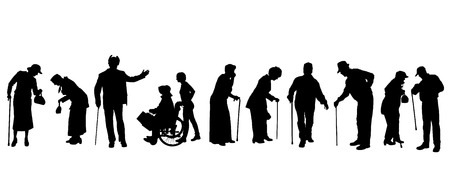Understanding Autism Spectrum Disorder (ASD) in American Children
What is Autism Spectrum Disorder?
Autism Spectrum Disorder (ASD) is a neurodevelopmental condition that affects how children communicate, interact, and learn. In the United States, ASD is recognized as a spectrum because it includes a wide range of symptoms and levels of ability. Some children may need significant support in their daily lives, while others might be more independent but still face social or behavioral challenges.
Prevalence of ASD in the U.S.
The Centers for Disease Control and Prevention (CDC) estimates that about 1 in 36 children in the United States has been identified with ASD. Boys are four times more likely to be diagnosed than girls. The prevalence of ASD has increased over the years, partly due to better awareness and improved screening methods.
| Year | Estimated Prevalence (1 in X Children) |
|---|---|
| 2000 | 1 in 150 |
| 2010 | 1 in 68 |
| 2020 | 1 in 54 |
| 2023 | 1 in 36 |
How is ASD Diagnosed?
In the U.S., ASD is usually diagnosed through a combination of developmental screenings and comprehensive evaluations by pediatricians, psychologists, or specialized clinicians. Early diagnosis is important because it allows for timely intervention, which can make a big difference in a childs development. Most diagnoses happen between ages 2 and 4, though some children may be identified earlier or later depending on their symptoms.
Common Signs Leading to an Evaluation:
- Delayed speech or language skills
- Lack of eye contact or interest in peers
- Repetitive movements or behaviors (like hand-flapping)
- Sensitivity to sounds, lights, or textures
- Difficulties with changes in routine
Key Characteristics of ASD in American Children
Every child with ASD is unique, but certain traits are commonly seen among American children with autism:
- Communication Challenges: Some children may not speak at all, while others might have trouble holding conversations or understanding social cues.
- Social Differences: Many kids with ASD prefer playing alone and may struggle to form friendships.
- Sensory Sensitivities: Overreacting or underreacting to sensory input—such as loud noises or certain fabrics—is common.
- Narrow Interests: Intense focus on specific topics or activities, sometimes to the exclusion of other interests.
- Routine-Oriented Behavior: Rigid routines and difficulty coping with change are typical characteristics.
Pediatric Rehabilitation’s Role
Pediatric rehabilitation professionals—including occupational therapists, physical therapists, and speech-language pathologists—play a vital role in helping children with ASD reach their developmental milestones. By understanding how autism impacts each child uniquely within the context of American families and communities, these specialists provide tailored interventions that support growth and independence at home, school, and beyond.
2. Developmental Milestones: What to Expect and When
Understanding Developmental Milestones in Early Childhood
Developmental milestones are important skills or abilities that most children achieve by a certain age. These include physical, social, emotional, cognitive, and language skills. In the United States, pediatricians and caregivers pay close attention to these milestones because they help spot early signs of developmental differences, including those seen in Autism Spectrum Disorder (ASD).
Key Milestones Monitored in American Pediatric Care
Healthcare providers in the U.S. use regular well-child visits to monitor developmental progress. During these check-ups, doctors often ask parents about their childs behaviors and skills, and sometimes use screening tools such as the Ages & Stages Questionnaires or the Modified Checklist for Autism in Toddlers (M-CHAT). If there are concerns about a childs development, pediatricians may recommend further evaluation or refer families to early intervention services.
Typical Developmental Milestones Table
| Age | Milestone Area | Expected Skills |
|---|---|---|
| 6 Months | Social/Emotional | Responds to own name, smiles at people |
| 12 Months | Language/Communication | Says simple words like “mama” or “dada,” waves goodbye |
| 18 Months | Cognitive | Points to show interest, follows simple directions |
| 24 Months (2 Years) | Physical/Motor Skills | Walks alone, begins to run, kicks a ball |
| 36 Months (3 Years) | Social/Emotional & Language | Copies adults and friends, speaks in short sentences, shows affection without prompting |
The Role of Pediatric Rehabilitation Professionals
Pediatric rehabilitation specialists—including occupational therapists, speech-language pathologists, and physical therapists—are key members of the care team for children with ASD. They work closely with families to understand each child’s strengths and challenges related to developmental milestones. Early intervention is especially valued in American healthcare culture; starting therapy as soon as possible can make a significant difference in helping children reach their full potential.

3. How ASD Impacts Growth and Development
Autism Spectrum Disorder (ASD) affects each child differently, but it often changes how kids reach important developmental milestones. Understanding these differences helps parents, teachers, and pediatric rehab specialists support children more effectively.
Social Milestones
Children with ASD may experience delays or changes in social development compared to their peers. These can include:
| Typical Social Milestone | Possible Impact of ASD |
|---|---|
| Making eye contact | May avoid or have limited eye contact |
| Responding to name | Might not respond when called |
| Engaging in pretend play | Less likely to engage in or understand pretend play |
| Sharing interests with others | May show little interest in sharing experiences or objects |
Communication Milestones
Communication challenges are a core feature of ASD. These can affect both verbal and nonverbal skills, such as:
| Typical Communication Milestone | Possible Impact of ASD |
|---|---|
| Babbling by 12 months | Might babble less or not at all by this age |
| Using simple words by 16 months | Might have delayed speech or use few words |
| Pointing to express needs or interests | Might not point or use gestures to communicate |
| Having conversations with others | Difficulties starting or maintaining conversations; may repeat phrases (echolalia) |
Motor Milestones
While ASD primarily impacts social and communication skills, motor development can also be affected. Some children might show:
- Delayed crawling or walking: Movement skills may develop later than usual.
- Poor coordination: Difficulty with tasks like catching a ball or riding a bike.
- Unusual movements: Repetitive motions such as hand-flapping, rocking, or spinning.
- Trouble with fine motor skills: Challenges using utensils, buttoning clothes, or holding pencils.
Pediatric Rehabilitation Insights
Pediatric rehabilitation specialists work closely with families to address these developmental concerns. They create personalized plans that focus on building strengths in social interaction, communication, and movement. Early intervention is key—it helps maximize each childs potential and supports their independence as they grow.
4. Pediatric Rehabilitation Approaches for Children with ASD
Understanding Evidence-Based Therapies
In the United States, pediatric rehabilitation for children with Autism Spectrum Disorder (ASD) is built around evidence-based therapies that address unique developmental needs. These approaches aim to help kids reach important milestones in communication, social skills, play, and daily living activities. Professionals like occupational therapists, speech-language pathologists, and physical therapists often work together as a team to provide comprehensive care.
Common Intervention Strategies
| Therapy/Intervention | Main Focus | How It Helps |
|---|---|---|
| Applied Behavior Analysis (ABA) | Behavior and learning skills | Uses positive reinforcement to teach new behaviors and reduce challenging ones; highly individualized |
| Speech-Language Therapy | Communication and language development | Improves verbal and nonverbal communication; supports social interaction and functional language use |
| Occupational Therapy (OT) | Daily living skills and sensory integration | Helps with dressing, feeding, handwriting, and coping with sensory sensitivities common in ASD |
| Physical Therapy (PT) | Gross motor skills and coordination | Supports balance, strength, posture, and participation in physical activities |
| Social Skills Training | Peer interactions and relationships | Teaches turn-taking, sharing, reading social cues, and building friendships through structured play or group settings |
| Parent-Mediated Interventions | Family involvement in therapy | Empowers parents with strategies to support their child’s progress at home; promotes consistency across environments |
The Role of Individualized Plans in American Rehab Settings
Pediatric rehab teams in the U.S. develop Individualized Education Programs (IEPs) or Individualized Family Service Plans (IFSPs) tailored to each child’s strengths and challenges. Regular goal-setting meetings include families as key partners, making sure therapy goals fit the child’s daily life at home and school.
The Importance of Early Intervention
Early intervention is highly valued in American practice. Research shows that starting therapy early—sometimes before age three—can make a big difference in helping children with ASD build critical skills for future independence.
Cultural Considerations in American Pediatric Rehab
Pediatric rehab professionals understand that every family is different. They respect cultural values, family routines, and individual goals when planning interventions. Flexibility is key so that therapy feels relevant and supportive for each family’s unique needs.
5. Collaborating with Families and Schools in the U.S.
Children with Autism Spectrum Disorder (ASD) benefit greatly when families, schools, and pediatric rehabilitation professionals work together. In the United States, this collaboration is key to helping children reach important developmental milestones. Here are practical ways to build strong partnerships:
Understanding Each Partners Role
| Partner | Main Responsibilities |
|---|---|
| Families | Share insights about the childs strengths, needs, and daily routines. Support therapy activities at home. |
| Educators | Provide structured learning environments. Adapt teaching strategies to individual needs. |
| Pediatric Rehab Professionals | Assess development, deliver therapies, and guide families and teachers on supportive practices. |
Effective Communication Strategies
- Regular Meetings: Set up consistent times for families, therapists, and teachers to discuss progress and challenges.
- Clear Language: Use simple terms that everyone understands—avoid medical jargon when possible.
- Shared Goals: Agree on specific, measurable goals for the child’s development at home and school.
- Feedback Loops: Encourage open feedback from all partners so adjustments can be made quickly if needed.
Cultural Considerations in the U.S.
The U.S. values family involvement and individualized education plans (IEPs). Respecting each family’s background and preferences helps build trust. Schools are required by law (IDEA) to include families in decision-making for children with disabilities, including ASD.
Tips for Building Strong Partnerships
- Listen First: Start conversations by asking families about their priorities and concerns.
- Use Visual Aids: Share charts or pictures to help explain progress or new strategies.
- Create a Team Mindset: Remind everyone that they are working toward a common goal: helping the child thrive.
- Acknowledge Efforts: Celebrate small wins together—progress matters!
When families, schools, and rehabilitation teams work hand-in-hand, children with ASD have the best chance to succeed in reaching their developmental milestones in meaningful ways that fit their unique needs and American cultural context.

